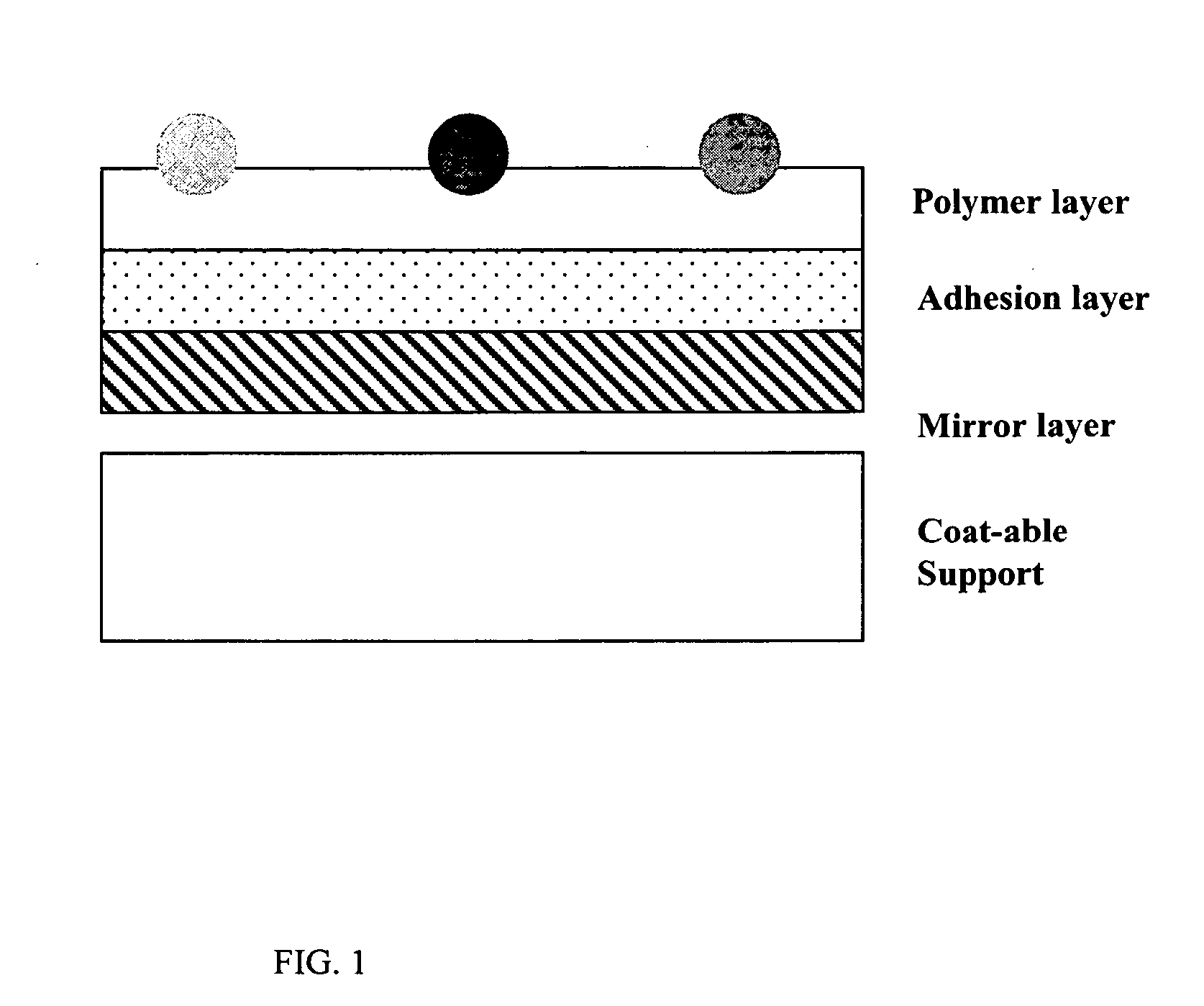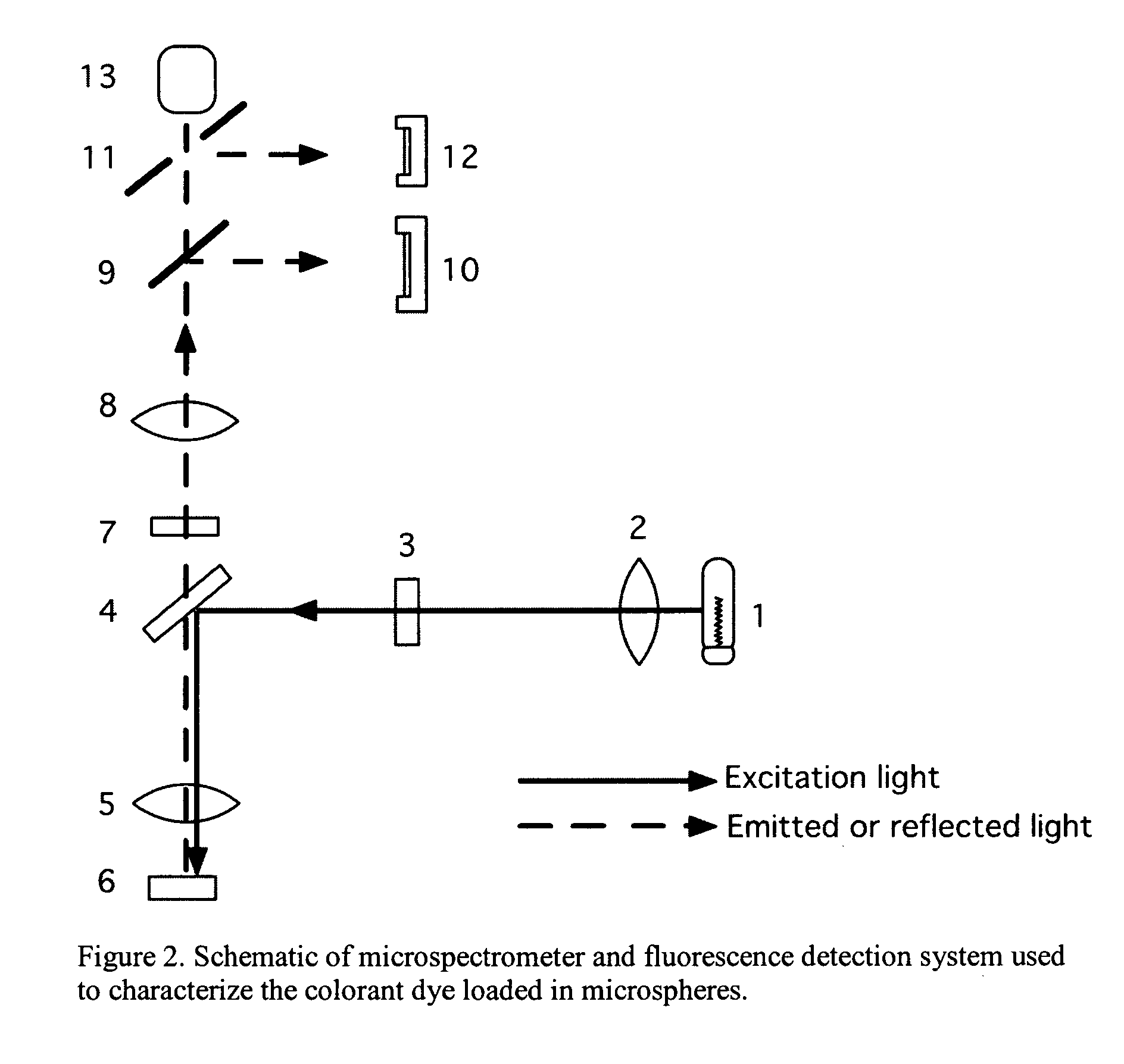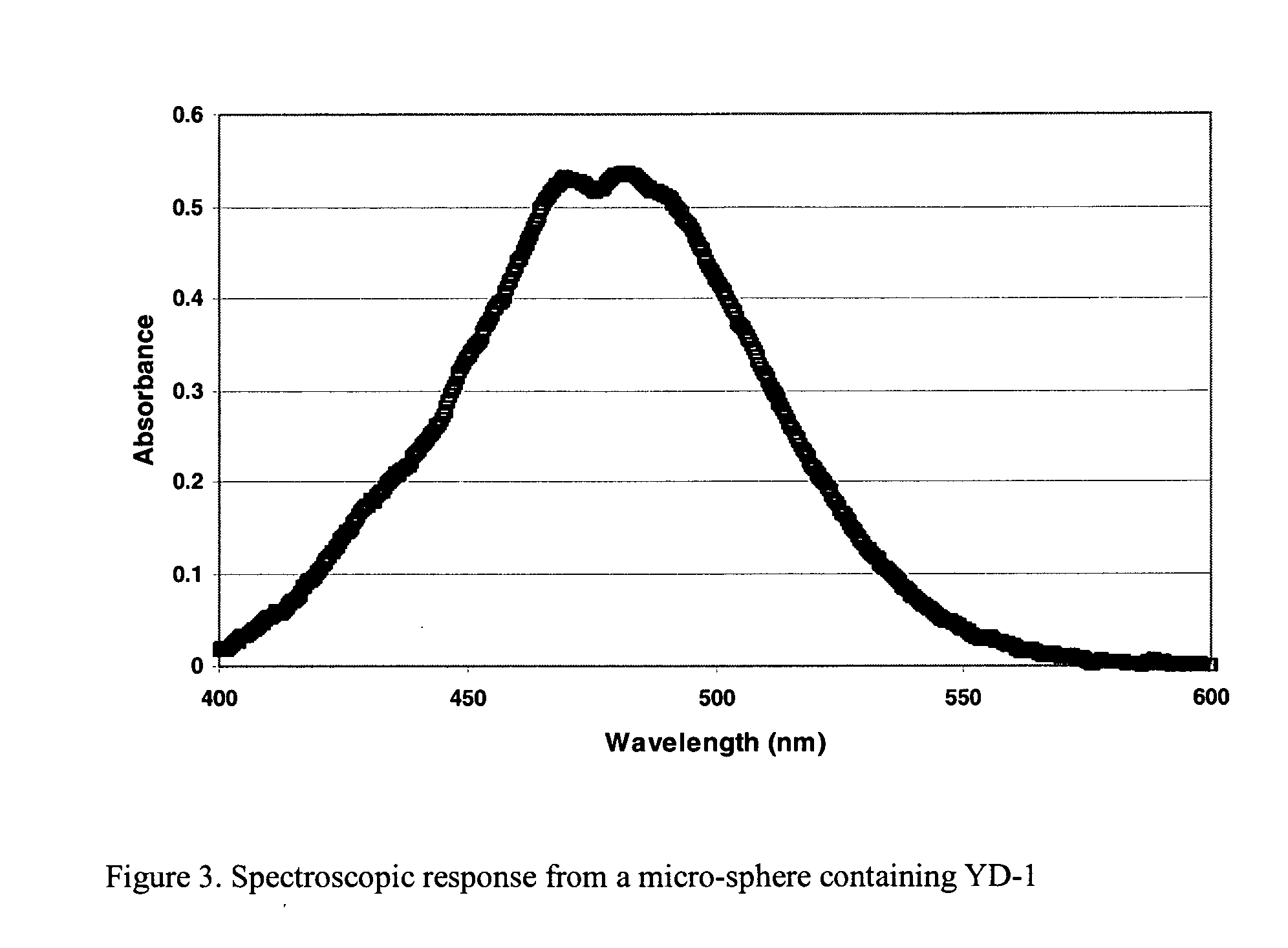Yellow low fluorescence dye for coated optical bead random array DNA analysis
- Summary
- Abstract
- Description
- Claims
- Application Information
AI Technical Summary
Benefits of technology
Problems solved by technology
Method used
Image
Examples
example 1
[0034] This example illustrates the colorant density obtained by using dye YD-1 (whose synthesis is described in JP 60032851) to color polystyrene microsphere beads.
[0035] A 4.2% aqueous suspension of polystyrene beads prepared by emulsion polymerization and having a mean size of 10 micrometers was obtained from Interfacial Dynamics Corporation, Portland, Oreg.
[0036] A suspension of yellow colored beads YD-1 was prepared by first dissolving 0.006 grams of YD-1 in 0.02 grams of toluene and 2 grams of acetone. 2.5 grams of the suspension of the above suspension of non-dyed (clear) beads was combined with 3 grams of acetone. This mixture was then added rapidly to the solution of YD-1 in acetone and toluene while stirring to prepare a suspension of colored beads. The suspension of colored beads was then filtered using a porous cotton filter, poured into a dialysis bag (12,000 to 14,000 molecular weight cut off) and washed with distilled water for one hour. fter washing, the suspension...
example 2
[0054] This example illustrates the very low fluorescence obtained in polystyrene microsphere beads colored with YD-1.
[0055] Comparison of the fluorescence intensity variation in several yellow dyes was made using the hybrid analytical system described above. By incorporating fluorescence cubes, each consisting of an exciter filter, 3 in FIG. 2, a dichroic mirror, 4, and a barrier filter, 7, the fluorescence emission characteristics of a colorant can be monitored. The spectroscopy data was used to select the wavelength characteristics of the fluorescence cube. For the yellow dyes used in this invention application, the excitation filter was selected to band pass light in the 550-580 nm region, the dichroic mirror was capable of passing light >600 nm in wavelength, and the barrier filter had a high pass characteristic of >610 nm. By setting the spectrometer to collect fluorescence emission intensity for a fixed time (1 second), while keeping other experimental conditions constant, c...
PUM
| Property | Measurement | Unit |
|---|---|---|
| Diameter | aaaaa | aaaaa |
| Diameter | aaaaa | aaaaa |
| Diameter | aaaaa | aaaaa |
Abstract
Description
Claims
Application Information
 Login to View More
Login to View More - R&D
- Intellectual Property
- Life Sciences
- Materials
- Tech Scout
- Unparalleled Data Quality
- Higher Quality Content
- 60% Fewer Hallucinations
Browse by: Latest US Patents, China's latest patents, Technical Efficacy Thesaurus, Application Domain, Technology Topic, Popular Technical Reports.
© 2025 PatSnap. All rights reserved.Legal|Privacy policy|Modern Slavery Act Transparency Statement|Sitemap|About US| Contact US: help@patsnap.com



